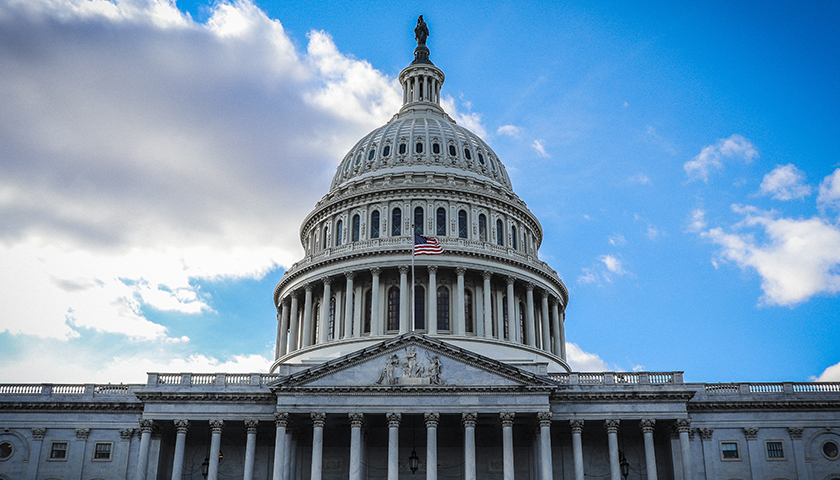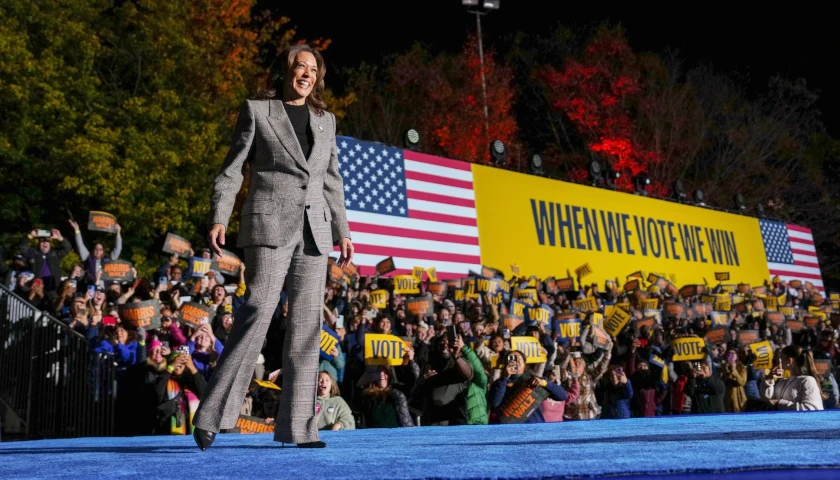by Andrew Wilford
Over the course of the pandemic, federal overspending has exploded even by Congress’s lofty standards. While trillion-dollar deficits were a cause for concern before 2020, spending over just the last two years is set to increase the national debt by over $6 trillion. It’s bizarre, then, that the only thing that members of opposing parties in Congress can seem to work together on is fooling the budgetary scorekeepers with phantom offsets for even more spending.
In total, the bipartisan infrastructure deal includes around $550 billion in new federal spending on infrastructure to take place over five years. Advocates of the legislation claim that it is paid for, but they are relying on gimmicks and quirks of the budget scoring process to make that claim.
Take the single biggest offset claimed — repurposing unused COVID relief funds, which the bill’s authors say would “raise” $210 billion (particularly considering that at least $160 billion have already been accounted for in the Congressional Budget Office (CBO) baseline). Only in the minds of Washington legislators does this represent funds ready to be used when the national debt stands at over $28 trillion.
Imagine you take out a $20,000 loan to pay for your upcoming wedding. At the last moment, your spouse-to-be backs out. Do you then decide that you just got a free $20,000 to buy a new car with? Of course not, you still have to pay back that $20,000 loan. And did I mention that you’re already $28 trillion in debt?
Congress intends to use this trick a second time as well, this time with $53 billion from states that elected to end the federal unemployment insurance subsidy early. In total, $263 billion, or nearly half of the alleged “offsets,” come from pretending that unspent funds that weren’t paid for in the first place can be used to pay for something else.
Another major “pay-for” that is essentially budget voodoo is $51 billion from delaying the Medicare Part D rule. President Trump proposed a regulation intended to reform how insurers and pharmacy benefit managers (PBMs) handle prescription drug rebates that budget experts said would result in about $177 billion in additional federal spending on Medicare and Medicaid premiums. President Biden has delayed implementation of the rule until 2023, and now lawmakers are proposing to “pay for” their infrastructure package by delaying the rule even longer. The rule has yet to even go into effect, but still Congress gets to count its delayed implementation as “savings.”
Congress also is counting $56 billion in projected additional revenue from economic growth resulting from the infrastructure package. Those old enough to remember will recall how bitterly Democrats in Congress fought the use of dynamic scoring as an offset for the 2017 tax reform law, though they seem happy enough to embrace it here. That’s backwards, considering how the evidence is far stronger that tax cuts boost economic growth than spending. What’s more, the CBO has stated that private investment has twice the rate of return as public investment.
The rest of the so-called pay-fors in this package are generally more of the same on a smaller scale. The National Taxpayers Union and National Taxpayers Union Foundation have each gone line by line and explained how proposed pay-fors, from mortgage guarantee fees to Strategic Petroleum Reserve sales to extending the mandatory sequester, are unlikely to offset the cost to taxpayers much at all.
Though Congress is keeping up the pretense of paying for new spending, taxpayers shouldn’t be fooled — very few of the offsets laid out in the bipartisan infrastructure will ameliorate the budget impact of this legislation. If new spending is truly necessary, it shouldn’t be too hard for Congress to trim the fat elsewhere.
– – –
Andrew Wilford is a policy analyst with the National Taxpayers Union Foundation, a nonprofit dedicated to tax policy research and education at all levels of government.





